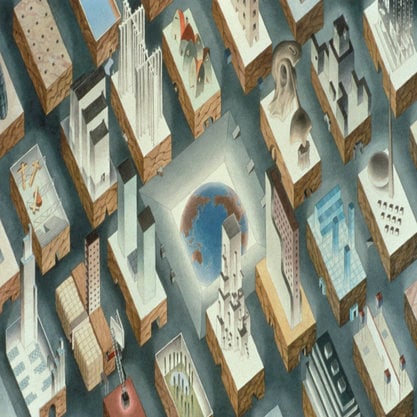Article
Brandt, Marianne (1893–1983) By Otto, Elizabeth
Article
Best remembered for her metal designs, Marianne Brandt created the small tea extract pot that set a record in 2007 for the highest sum ever paid for a Bauhaus object. While her work in metal has become iconic, other aspects of Brandt’s diverse œuvre and her influence on the Bauhaus still remain little studied.
Born Marianne Liebe to an upper-middle-class family in the industrial city of Chemnitz, she received her diploma as a painter in 1918 from Weimar’s Grand Ducal Saxon College of Fine Art [Grossherzogliche-Sächsische Hochschule für Bildende Kunst]. She married the Norwegian artist Erik Brandt, and they spent the next two years in Norway and France. Brandt had begun a new course of study in sculpture at the College of Fine Arts in Weimar in 1923 when she saw the State Bauhaus Exhibition [Staatliches Bauhaus Ausstellung] and was inspired to begin her studies anew at the Bauhaus. Brandt completed the Preliminary Course [Vorkurs] under the direction of Josef Albers and László Moholy-Nagy. At the latter’s suggestion she apprenticed at the Metal Workshop, one of the most male-dominated divisions of the school. Brandt experienced some hazing but also had immediate success with the sleek designs and pure forms of her metal tea services and other household items.


.jpg)
